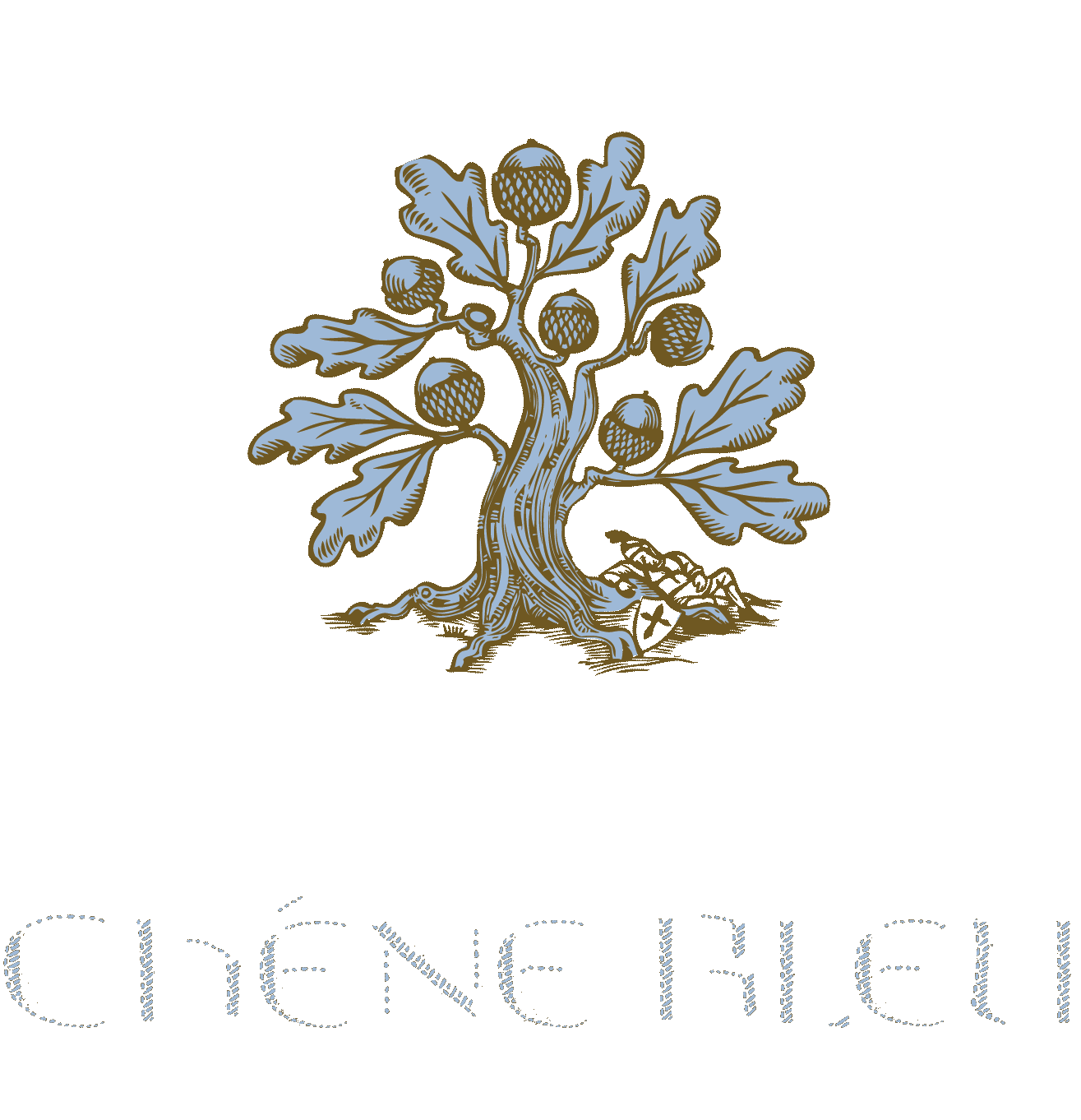In English puis en français.
Harvest 2025 brought with it some substantial challenges — we were all set to have a bumper crop this year but pronounced heat and drought in August shrunk the berries, the whites were especially hard hit, and then torrential rain and storms in September meant that we received 40% of our entire year’s rainfall that month alone, including 5 days of consecutive rain, which spells Nightmare on Grape Street, as we were at risk of loosing much of the quality of the harvest to dilution, and the quantity to mildew.
We didn’t luck out this year and get a lot of wind, and it was quite warm (never good for mildew pressure after the rain). But thankfully, Josselin, Pierre and the team had done a lot of precautionary leaf thinning in crucial zones to improve air-flow and help the bunches dry out, and we brought in extra hands to thin some other areas. The drying Provençal sun also came to the rescue toward the end.
Despite the dramatic weather and loss of grape volume, yields were still up an impressive 25% compared to our skimpy 2024 harvest, so back to historical averages.
Josselin, our serious and understated cellar master not prone to hyperbole, was “pleased as punch” that his precision picking plan — carefully working around the rain that caused considerable damage — paid off and saved the day. We ended up having to assess not just each row, but each individual vine, to ensure only the best grapes were brought in.
So although the sugars/potential alcohol levels are on the lower side for our top reds, it’s shaping up to be one of our more interesting vintages on record — and our wonderful team of harvesters was one of the best too.
VENDANGES 2025 :
Les vendanges 2025 ont apporté leur lot de défis importants — nous étions prêts à avoir une récolte exceptionnelle cette année, mais la chaleur prononcée et la sécheresse d'août ont fait rétrécir les baies. Les blancs ont été particulièrement touchés. A la suite de ce mois d’août, les pluies torrentielles et les orages de septembre ont apporté en un mois l'équivalent de 40 % des précipitations annuelles. Nous avons notamment eu 5 jours de pluie consécutifs, un cauchemar pour nos vignes car nous risquions de perdre une grande partie de la qualité de la récolte à cause de la dilution et le risque de propagation du mildiou.
Fort heureusement, Josselin, Pierre et l'équipe avaient effectué un important travail d'effeuillage préventif dans des zones cruciales pour améliorer la circulation de l'air et aider les grappes à sécher, et nous avons fait venir des du personnel supplémentaire pour éclaircir d'autres zones. Un soleil provençal providentiel, permettant de sécher les grappes, est également venu à notre rescousse.
Malgré les conditions météorologiques très compliquées et la perte de volume, les rendements ont tout de même augmenté de 25 % par rapport à notre maigre récolte de 2024, revenant ainsi aux moyennes historiques.
Josselin, notre maître de chai sérieux et discret, peu enclin à l'hyperbole, était « ravi comme tout » que son plan de vendange de précision ait porté ses fruits et sauvé la situation. Nous avons fini par devoir évaluer non seulement chaque rang, mais aussi chaque pied de vigne individuellement, pour nous assurer que seuls les meilleurs raisins étaient rentrés.
Ainsi, bien que les niveaux de sucres/alcool potentiels soient plutôt bas pour nos meilleurs rouges, cela s'annonce comme l'un de nos millésimes les plus intéressants jusqu’à ce jour— et notre agréable équipe de vendangeurs était également l'un des meilleurs millésimes.
#CheneBleu #Harvest2025 #Vendanges2025 #ProvenceWine #SustainableWinemaking #FineWine #VineyardLife #LaVerriere #WineHarvest #OrganicWine #CotesDuVentoux




